emegs (qt version)
Created by: emegsadmin, Last modification: Fri 14 of Nov, 2014 (06:37 UTC)
EMEGS (Qt version) is a stand-alone version of EMEGS written in C++ and running without the MATLAB environment. EMEGS (Qt version) runs natively under Windows, MAC and Unix operating systems. It provides a single more intuitive interface and faster graphics than the MATLAB version. Supported raw data formats include: Biosemi BDF, Varioport VPD, Electrical Geodesics RAW and Biopac ACQ. Result storage is organized in an SQL database, allowing a maximum of flexibility for postprocessing, data backup and data exchange with other analysis software.
In addition to handling ERPs, EMEGS (Qt version) includes modules for ECG, EDA, Startle, and HRV analysis (and even more in future releases). The software name for the Qt version therefore is misleading, but is being kept for historical reasons.

EMEGS (Qt version) implements all major ERP analysis components from the MATLAB version (filtering, epoch extraction, occular correction, artefact detection, event-related averaging). The folllowing image shows the statistical artefact editing in EMEGS (Qt version):
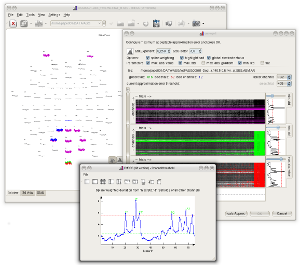

ERP-data 2d and 3d display, and statistical analysis tools (region of interest ANOVA) are fully implemented. The ERP file format used is identical to the MATLAB version, so it is possible to take advantage of both the MATLAB and the Qt version for one dataset. Here is a screenshot of the display/analysis of evoked potentials:
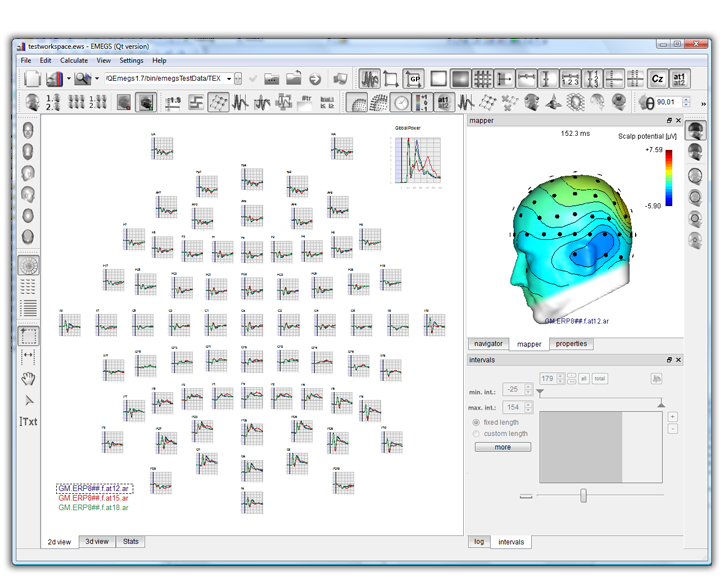

EMEGS (Qt version) can also perform a full analysis of a Lead-II electrocardiogram, including the detailed editing of the wave components, providing the RR-interval, the QT-interval, the T-wave-amplitude and the PQ-interval amongst others. This image shows the P-,Q-, S- and T-Wave detection in EMEGS (Qt version):
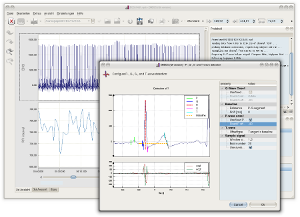

EMEGS (Qt version) also offers a complete reflexive startle EMG analysis routine, with automatic preprocessing (filtering, rectification and smoothing), manual scoring of individual trials, drag-and-drop baseline window adjustment and onset latency and response latency editing, and optional within-subject normalization. The image below shows a sample trial including the scoring controls and the baseline and response window lines.
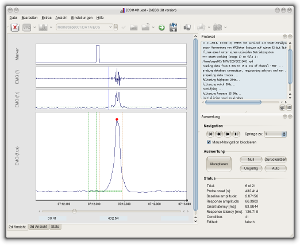

It includes an EDA analysis module, allowing for manual artefact editing, filtering/smoothing, and signal decomposition (deconvolution) to provide a tonic component and a phasic driver. On the following screenshot you can see the decomposition and the phasic driver.
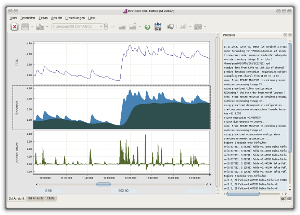

The HRV-analysis module is currently under construction, but will be ready soon.
To download EMEGS (Qt version) register/login first.
In addition to handling ERPs, EMEGS (Qt version) includes modules for ECG, EDA, Startle, and HRV analysis (and even more in future releases). The software name for the Qt version therefore is misleading, but is being kept for historical reasons.

EMEGS (Qt version) implements all major ERP analysis components from the MATLAB version (filtering, epoch extraction, occular correction, artefact detection, event-related averaging). The folllowing image shows the statistical artefact editing in EMEGS (Qt version):


ERP-data 2d and 3d display, and statistical analysis tools (region of interest ANOVA) are fully implemented. The ERP file format used is identical to the MATLAB version, so it is possible to take advantage of both the MATLAB and the Qt version for one dataset. Here is a screenshot of the display/analysis of evoked potentials:


EMEGS (Qt version) can also perform a full analysis of a Lead-II electrocardiogram, including the detailed editing of the wave components, providing the RR-interval, the QT-interval, the T-wave-amplitude and the PQ-interval amongst others. This image shows the P-,Q-, S- and T-Wave detection in EMEGS (Qt version):


EMEGS (Qt version) also offers a complete reflexive startle EMG analysis routine, with automatic preprocessing (filtering, rectification and smoothing), manual scoring of individual trials, drag-and-drop baseline window adjustment and onset latency and response latency editing, and optional within-subject normalization. The image below shows a sample trial including the scoring controls and the baseline and response window lines.


It includes an EDA analysis module, allowing for manual artefact editing, filtering/smoothing, and signal decomposition (deconvolution) to provide a tonic component and a phasic driver. On the following screenshot you can see the decomposition and the phasic driver.


The HRV-analysis module is currently under construction, but will be ready soon.
To download EMEGS (Qt version) register/login first.

 home
home